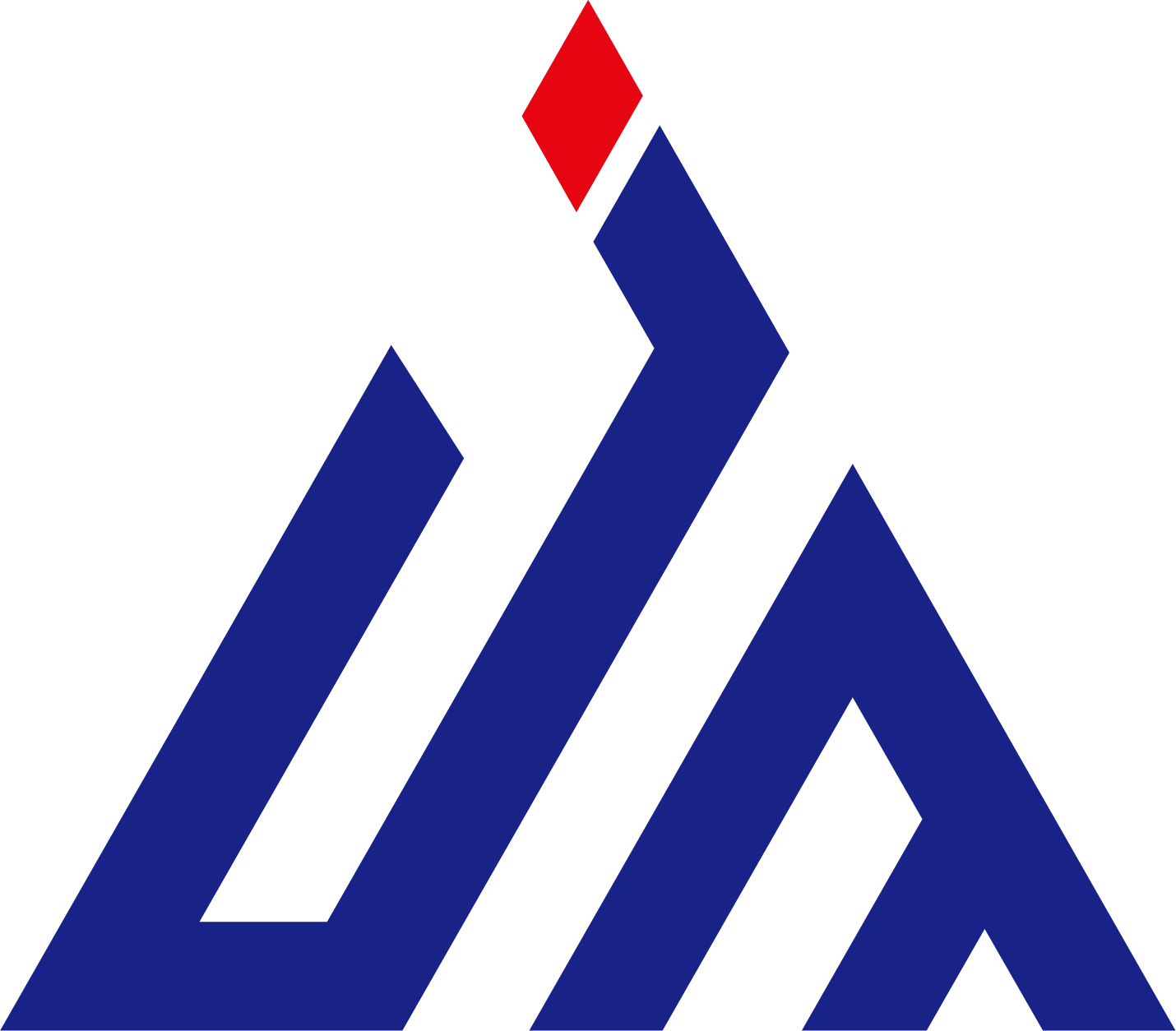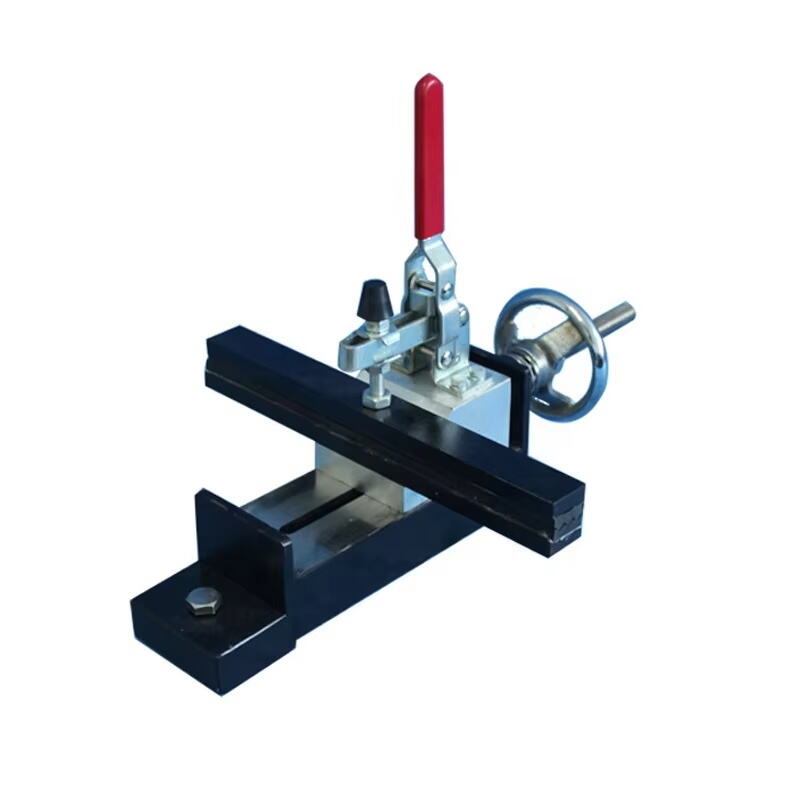ম্যানুয়াল বিয়ার অটোমেটিক স্ক্রিন স্ট্রেচারের মৌলিক যান্ত্রিকতা
ম্যানুয়াল অপারেশন: হ্যান্ডস-অন টেনশন সংশোধন
ম্যানুয়াল স্ক্রিন স্ট্রেচিং সরঞ্জাম অপারেটরকে টেনশন সমন্বয় ম্যানুয়ালি করতে হয়, যা স্ট্রেচিং প্রক্রিয়ায় ব্যক্তিগত স্পর্শ যোগ করে। এই ধরনের হাতের কাছাকাছি পদ্ধতি অপারেটরদের তাৎক্ষণিক প্রতিক্রিয়া এবং নিয়ন্ত্রণ প্রদান করে, যাতে তারা প্রয়োজন অনুসারে মুদ্রণের সময় টেনশনিং পরিবর্তন করতে সমন্বয় করতে পারেন। কিন্তু এই পদ্ধতিটি অসম টেনশনের দিকে পরিচালিত করতে পারে, যা মোটের উপর মুদ্রণ মান হ্রাস করতে পারে। উদাহরণ হিসাবে, একজন অদক্ষ অপারেটর চূড়ান্ত পণ্যে ত্রুটি নিয়ে আসতে পারেন। যাইহোক, কাস্টম কাজের ক্ষেত্রে যেখানে প্রায়শই সেটিং পরিবর্তন করা হয়, ম্যানুয়াল স্ক্রিন স্ট্রেচিং সরঞ্জামের স্বাধীনতার স্বয়ংক্রিয় প্রকারের তুলনায় একটি প্রান্ত রয়েছে।
অটোমেটেড সিস্টেম: প্রযুক্তির মাধ্যমে নির্ভুলতা
অ্যাডভান্সড-টেকনোলজি স্ক্রিন স্ট্রেচারগুলি প্রতিটি স্ক্রিনের জুড়ে সমান টান প্রদান করে যা কম বিরতিতে ব্যাচগুলির উচ্চ মান নিশ্চিত করে। এই সিস্টেমগুলির অধিকাংশের প্রোগ্রামযোগ্য সেটিংস রয়েছে যা বিভিন্ন টানের প্রয়োজনীয়তার জন্য স্ট্রেচারগুলির মধ্যে পরিবর্তন করার অনুমতি দেয় এবং সম্ভাব্য সবচেয়ে দ্রুত সেটআপ সময় নিশ্চিত করে। মেশিন নিয়ন্ত্রণের নির্ভুলতা পরিসংখ্যানগত তথ্যের ভিত্তিতে পরিলক্ষিত ত্রুটির চেয়ে অনেক কম ত্রুটি এবং মানের অসঙ্গতি হ্রাস করেছে। ম্যানুয়ালের তুলনায় স্থিতিশীলতা এবং মান বৃদ্ধির পাশাপাশি, স্বয়ংক্রিয়তা প্রক্রিয়াগুলি সরলীকরণের মাধ্যমে অতিরিক্ত দক্ষতা তৈরি করে, যা বেশি আউটপুটযুক্ত ক্যাম্পেইনের ক্ষেত্রে একটি প্রধান উপাদান। যেসব ব্যবসা স্বয়ংক্রিয় সিস্টেম বেছে নেয় তারা উচ্চ উৎপাদন এবং কম পরিচালন খরচের মাধ্যমে প্রতিযোগীদের থেকে এক পদক্ষেপ এগিয়ে থাকে।
স্ক্রিন টেনশনিং-এ দক্ষতা এবং সঙ্গতি
মানুষের দক্ষতা বনাম ক্যালিব্রেটেড মেকানিক্স
স্ক্রিন টেনশনিংয়ের সঠিকতা এটি কীভাবে সম্পাদন করা হয় তার উপর অত্যন্ত নির্ভরশীল, এবং ম্যানুয়াল পদ্ধতির ক্ষেত্রে মানব দক্ষতা খুবই গুরুত্বপূর্ণ। স্ক্রিনের ম্যানুয়াল টেনশনিং অপারেটরের দক্ষতার উপর অনেকটাই নির্ভর করে। এটি টেনশনের পার্থক্য এবং মানব দক্ষতার কারণে চূড়ান্ত মুদ্রিত ফলাফলের ওপর প্রভাব ফেলতে পারে। অন্যদিকে, ক্যালিব্রেটেড স্বয়ংক্রিয় পদ্ধতিগুলি ব্যাচের আকার অন্যান্য পরামিতির নিরপেক্ষতা সত্ত্বেও স্ক্রিনগুলিতে প্রক্রিয়াটি ধ্রুবক রাখতে সক্ষম করে। এই ধরনের সিস্টেমগুলি মিশন-সমালোচনামূলক উত্পাদন পরিবেশে ভালো প্রদর্শন করে এবং আপনাকে হতাশ করবে না। শিল্পের 'বক্তারা' প্রায়শই মন্তব্য করেন যে নিয়মিত ক্যালিব্রেশন এবং রক্ষণাবেক্ষণের মাধ্যমে স্বয়ংক্রিয় সিস্টেমগুলির সঠিকতা ম্যানুয়ালের সমান এবং কখনও কখনও তার চেয়েও বেশি হয়, যা তাদের প্রতিযোগিতামূলক সুবিধা দেয়।
ব্যাচের আকারের উপর মুদ্রণের গুণমানের উপর প্রভাব
ম্যানুয়াল এবং অটোমেটিক স্ক্রিন টেনশনিং পদ্ধতির মধ্যে তুলনা ব্যাচ আকারের ক্ষেত্রে বিশেষভাবে দৃশ্যমান। গবেষণায় দেখা গেছে যে, যখন ব্যাচের আকার বৃদ্ধি পায়, তখন কম সহনশীলতা (টোলারেন্স) খুবই গুরুত্বপূর্ণ হয়ে ওঠে এবং ছাপগুলির মধ্যে ভিন্নতা কমিয়ে অটোমেটিক প্রিন্টার জয়ী হয়। উদাহরণস্বরূপ, গবেষণার মাধ্যমে দেখা গেছে যে বড় ব্যাচের ক্ষেত্রে অটোমেটিক সিস্টেম থেকে প্রাপ্ত নিয়মিত টান (ড্র ফোর্স) এর মাধ্যমে উচ্চ মানের ছাপ পাওয়া যায়। স্ক্রিন প্রিন্টিং এর ক্ষেত্রে প্রায়শই ঘটনাগুলি দেখায় যে অটোমেটিক সিস্টেমে QI জোড়া কম হয়, যেখানে প্রিন্ট রান প্রায়শই খুব উচ্চ হয়, যা প্রিন্ট রানের পরিমাণ নির্বিশেষে অটোমেটিক সিস্টেমে বিনিয়োগের সুবিধা পুনরায় নিশ্চিত করে উচ্চ মানের ছাপের জন্য।
কৌশল ও শ্রম তীব্রতা
হাতে করা সংশোধনের জন্য প্রয়োজনীয় বিশেষজ্ঞতা
ম্যানুয়াল স্ক্রিন স্ট্রেচারগুলি খুব দক্ষ কর্মী এবং প্রশিক্ষণের প্রয়োজন। sxপ্রস্তুতকারককে হাত দিয়ে টান এবং সারিবদ্ধতা ধরে রাখার জন্য বিভিন্ন ক্ষেত্রে দক্ষ হতে হবে, যার ফলে শুধুমাত্র অভিজ্ঞ প্রস্তুতকারকই কাজে দক্ষ হয়ে ওঠে। শিক্ষার বক্রতা বেশি, বিশেষ করে ছোট দোকানগুলিতে যাদের কর্মচারীদের প্রশিক্ষণ দিতে অনেক সময় লাগে। দক্ষ শ্রমের উপর নির্ভরশীলতা উৎপাদন প্রক্রিয়ার উৎপাদনশীলতা এবং পণ্যগুলির মধ্যে একরূপতা প্রভাবিত করতে পারে। এই সূক্ষ্ম সমন্বয়গুলির নিয়ন্ত্রণ কর্মশক্তি ঘনত্ব পরিচালনায় এবং পছন্দসই মুদ্রণ ফলাফল অর্জনে গুরুত্বপূর্ণ।
অটোমেশনের সাথে প্রশিক্ষণের প্রয়োজন কম
অন্যদিকে, স্বয়ংক্রিয় পর্দা স্ট্রেচারগুলি অপারেটরদের প্রশিক্ষণের জন্য প্রয়োজনীয় সহজতর করে তোলে। এই সিস্টেমগুলি ব্যবহারকারীদের বান্ধব পরিচালনা বৈশিষ্ট্যযুক্ত হওয়ায় ন্যূনতম অপারেটর প্রশিক্ষণের মাধ্যমে সরলীকৃত পরিচালনা নিশ্চিত করে। ম্যানুয়াল সিস্টেমগুলির সাথে প্রয়োজনীয় ব্যাপক প্রশিক্ষণের তুলনায়, স্বয়ংক্রিয় সিস্টেমগুলি কর্মীদের প্রশিক্ষণে প্রচুর সময় বাঁচায়। এটি খরচ সাশ্রয়েও পরিণত হয় এবং ব্যবসাগুলিকে বছরের পর বছর টেকনিক্যাল দল গঠনের পরিবর্তে উৎপাদন ক্ষমতা উন্নতির দিকে মনোনিবেশ করতে সক্ষম করে। প্রশিক্ষণের প্রয়োজনীয়তা হ্রাসের মাধ্যমে, স্বয়ংক্রিয় সমাধানগুলি আরও দক্ষ উৎপাদন পরিবেশ প্রবর্তন করে যা কাজের মান এবং কর্মীদের মনোবল বৃদ্ধি করে।
ব্যয় তুলনা: বিনিয়োগ এবং দক্ষতা
প্রাথমিক ব্যয়: সহজে মেনে যাওয়া হাতেমুখে ব্যাপার বনাম প্রিমিয়াম অটোমেটিক
স্ক্রিন স্ট্রেচার খরচের বেলা প্রায়শই ম্যানুয়াল মডেলগুলি সস্তা হয়, তাই শুরুকর্তা এবং ছোট দোকানগুলির মধ্যে এগুলি খুব জনপ্রিয়। ছোট দোকানগুলি বড় মূলধন ব্যয় ছাড়াই সরঞ্জামটি কিনতে সক্ষম হয় এবং নতুন ব্যবসা শুরু করতে পারে অথবা অন্যান্য কোম্পানিগুলির কাছ থেকে ব্যবসা কেড়ে আনতে পারে। অন্যদিকে, অটোমেশন সিস্টেম প্রয়োগের প্রাথমিক খরচ অনেকগুলি কোম্পানির জন্য অন্তরায় হয়ে দাঁড়ায়। অটোমেটিক সিস্টেমগুলি সাধারণত দামি হয় কারণ গ্রিডে সামঞ্জস্য করা নতুন প্রযুক্তি এবং দক্ষতা ফাংশনগুলির জন্য। কিন্তু এই প্রাথমিক মূল্যের সত্ত্বেও, চূড়ান্ত সুবিধা-যুক্তিগুলি, যেমন উৎপাদনশীলতা বৃদ্ধি, শ্রম হ্রাস করা- সাধারণত কোম্পানিগুলিকে বিনিয়োগ করতে রাজি করার জন্য যথেষ্ট হয়।
কম শ্রম এবং অপচয়ের ফলে দীর্ঘ সময়ের সঞ্চয়
প্রাথমিক খরচ ছাড়াও, স্বয়ংক্রিয় পদ্ধতিগুলি কম শ্রম এবং অপচয় কমানোর মাধ্যমে দীর্ঘমেয়াদী সাশ্রয় অর্জন করে। যখন পর্দা প্রসারণের কাজগুলি স্বয়ংক্রিয় হয়ে যায়, তখন হাতে করা কাজের পরিমাণ কমে যায় যার ফলে বেতনের খরচ কমে এবং নিয়মিত ও কার্যকর কাজ চলতে থাকে। স্বয়ংক্রিয় পদ্ধতিগুলি উপকরণ ব্যবস্থাপনায় দক্ষতা আনে এবং অপচয় ও খরচ কমায়। গবেষণায় দেখা গেছে যে ম্যানুয়াল পদ্ধতি থেকে স্বয়ংক্রিয় পদ্ধতিতে রূপান্তর করলে উপকরণের অপচয় 30% কমতে পারে এবং কার্যনির্বাহী দক্ষতা 40% বাড়তে পারে। এই খরচ সাশ্রয়ের মাধ্যমে স্বয়ংক্রিয় পদ্ধতিগুলি উৎপাদনশীলতা ও সম্পদের সাশ্রয়ের মাধ্যমে বেশি প্রাথমিক বিনিয়োগকে সহজেই পুষিয়ে ওঠে এমন খরচ-কার্যকর প্ল্যান্টগুলিতে জায়গা করে নেয়।
উৎপাদনের গতি এবং স্কেলিংয়ের পার্থক্য
ম্যানুয়াল স্ট্রেচারের ফ্লো সীমাবদ্ধতা
উৎপাদন এবং গতির ক্ষেত্রে, ম্যানুয়াল প্রসারণ ডিভাইসগুলি অপারেটরের দক্ষতা এবং গতি দ্বারা আরোপিত সীমাবদ্ধতার শিকার হতে পারে। ম্যানুয়াল সিস্টেমের থ্রুপুট প্রকৃতিগতভাবে ধীর হয়, প্রায়শই মানব হাতের ক্ষমতা দ্বারা সীমাবদ্ধ থাকে। উদাহরণস্বরূপ, একটি মধ্যম আকারের উৎপাদন ক্ষমতা সহ একটি ম্যানুয়াল প্রসারণ ফ্রেমের ক্ষেত্রে, দেরি হতে পারে যদি অপারেটর সমান গতিতে কাজ না করেন বা যদি তিনি ক্লান্ত হয়ে পড়েন, যার ফলে উভয় ক্ষেত্রেই অসম টানের মাত্রা ঘটে। উদাহরণস্বরূপ, একটি ম্যানুয়াল অপারেশন দিনে একশটি স্ক্রিনে কাজ করতে পারে, যেখানে একটি স্বয়ংক্রিয় মেকানিজম হাজার হাজার প্রক্রিয়া করতে পারে, এবং তাই উৎপাদনের পরিপ্রেক্ষিতে, ম্যানুয়াল প্রক্রিয়াটি দক্ষ নয়।
স্বয়ংক্রিয় সিস্টেমের উচ্চ আয়তনের ক্ষমতা
একই সময়ে, স্বয়ংক্রিয় সমাধানগুলি উৎপাদন ক্ষমতা তীব্রভাবে বৃদ্ধি করতে পারে—উচ্চ মান অক্ষুণ্ণ রেখে থ্রুপুটের জন্য উচ্চ ক্ষমতা প্রদান করে। একটি বৃহৎ সংখ্যক স্ক্রিনের জন্য একঘেয়ে টেনশন প্রদানের জন্য ডিজাইন করা হয়েছে, এই সিস্টেমগুলি ত্রুটি হ্রাস করতে সাহায্য করে। শিল্প পরিমাপে, স্বয়ংক্রিয় স্ক্রিন স্ট্রেচারগুলি চাহিদা-নির্ভর হওয়ার জন্য তৈরি করা যেতে পারে এবং ভিড়ের মতো পরিমাণ উৎপাদন করতে পারে, যেমন প্রতি পালা হাজার হাজার স্ক্রিন। উচ্চ-পরিমাণ উত্পাদনের বিভিন্ন পরিস্থিতিতে, স্বয়ংক্রিয়তায় স্থানান্তরিত হওয়া কোম্পানিগুলি উল্লেখযোগ্য পরিমাণে উত্পাদনশীলতা এবং স্কেলযোগ্যতা বৃদ্ধির বর্ণনা দেয়, যা তাদের বৃহত্তর বাজারে প্রসারিত হওয়ার অনুমতি দেয়।
প্রতি স্ক্রীন স্ট্রেচার ধরণের জন্য আদর্শ প্রয়োগ
হাতের কাজ: ছোট ব্যাচ এবং বিশেষ প্রকল্প
ম্যানুয়াল স্ক্রিন স্ট্রেচারগুলি ছোট পরিমাণ এবং কাস্টম কাজের ক্ষেত্রে আদর্শ, যেখানে বিস্তারিত খুঁটিনাটির দিকে লক্ষ্য রাখা প্রয়োজন। এই ধরনের প্রিন্টারগুলি শিল্পীদের এবং বিশেষ পণ্য উৎপাদনকারীদের প্রিন্টিং প্রক্রিয়াটি নিয়ন্ত্রণ করতে দেয় এবং একেবারে অনন্য ডিজাইনের জন্য উপযুক্ত। যেসব ক্ষেত্রে প্রিন্টের শিল্পগত গুণাবলি খরচের চেয়ে বেশি গুরুত্বপূর্ণ, যেমন সীমিত সংখ্যক স্ক্রিন প্রিন্ট বা কাস্টম সিল্কস্ক্রিনের ক্ষেত্রে, ম্যানুয়াল স্ট্রেচারগুলিই পছন্দ করা হয়। আর নিছক দর্শকদের জন্য বিভিন্ন কৌশল, টেক্সচার এবং ফিনিশ ঘাঁটার সম্ভাবনা থাকায় এটাই স্বাভাবিক যে নানা ধরনের গ্রাফিক শৈলী নিয়ে পরীক্ষা-নিরীক্ষা করছেন সৃজনশীল মানুষ।
অটোমেটিক: শিল্প চাহিদা এবং পুনরাবৃত্তি অর্ডার
অটোমেটিক স্ক্রিন স্ট্রেচারগুলি উচ্চ-পরিমাণ উত্পাদন এবং পুনরাবৃত্তি অর্ডার/অর্ডারের প্রয়োজনীয়তা অনুযায়ী তৈরি করা হয়। এই ধরনের সিস্টেম বৃহৎ উত্পাদন পরিবেশে সবচেয়ে ভালো কাজ করে, যেখানে ধারাবাহিকতা এবং উত্পাদন দক্ষতা প্রয়োজন। অটোমেশন বৃদ্ধির লক্ষ্যে ব্যবসা পরিচালনার সঙ্গে খাপ খায়, কারণ এটি বৃহৎ উত্পাদন পরিবেশে অপারেশন অপ্টিমাইজ করতে সাহায্য করে। এগুলি পুনরাবৃত্তিমূলক উত্পাদনের জন্য বড় পরিসরে ছাপার কাজে নির্ভরযোগ্য মান এবং গতি অর্জনে সাহায্য করে, যেসব বাজারে উচ্চ-স্পষ্টতা সম্পন্ন লেবেল অত্যন্ত গুরুত্বপূর্ণ। প্রস্তুতকারকদের কার্যক্রম বৃদ্ধির সাথে সাথে অটোমেটিক সিস্টেমগুলি উপভোক্তা চাহিদা বজায় রাখার জন্য একটি প্রমাণিত পদ্ধতি সরবরাহ করে, উত্পাদন আউটপুট ও দক্ষতা বৃদ্ধি করে এবং শ্রমিক শক্তির প্রয়োজনীয়তা কমায়।
প্রশ্নোত্তর: হ্যান্ড এবং অটোমেটিক স্ক্রিন স্ট্রেচার
কোনটি বেশি স্থায়ীত্ব প্রদান করে ব্যাপক ব্যবহারের জন্য?
স্ক্রিন স্ট্রেচারের স্থিতিশীলতা সম্পর্কে, এটি অ্যানালগ এবং অটোমেটিক উভয় ধরনের হয়ে থাকে, তা দেখে নিন যে এটি কি স্ক্রিন স্ট্রেচারের ব্যবহারকে প্রভাবিত করে। সাধারণত ভারী মাত্রায় ব্যবহারের জন্য অটোমেটিক স্ক্রিন স্ট্রেচার তৈরি করা হয় এবং এগুলো আরও স্থায়ী হয়ে থাকে। এগুলো 24/7 অপারেশনের জন্য তৈরি করা হয়, যা আমরা এই গতির সাথে পরীক্ষা করছি। কিছু প্রস্তুতকারক দাবি করেন যে অটোমেটিক স্ক্রিন স্ট্রেচারের নির্ভুল মেশিনিংয়ের ফলে দীর্ঘমেয়াদে কম ক্ষয়-ক্ষতি হয়, ভারী ব্যবহারের অধীনে নির্ভরযোগ্য অপারেশনের জন্য।
অন্যদিকে, হাতের স্ক্রীন স্ট্রেচারগুলি যদিও নির্ভরযোগ্য, প্রচুর ব্যবহারের অধীনে দ্রুত ক্ষয়প্রাপ্ত হওয়ার প্রবণতা দেখায়। এটি বিশেষত অ্যাপ্লিকেশনগুলির ক্ষেত্রে প্রযোজ্য যেখানে মানব ত্রুটি, উদাহরণস্বরূপ চলমান টান, রক্ষণাবেক্ষণের প্রয়োজনীয়তা বাড়িয়ে দিতে পারে। নাটগুলি ঢিলা হয়ে যেতে পারে অথবা কোনো সময়ে ফ্রেমটি বক্র হয়ে যেতে পারে, এবং দীর্ঘমেয়াদে এদের কার্যকারিতা নিশ্চিত থাকে না। এজন্যই স্বয়ংক্রিয় স্ক্রীন স্ট্রেচার ধরনগুলি বিদ্যালয়সহ বেশি ব্যবহৃত জায়গাগুলিতে ভালো করে, কারণ অনেকগুলি খুব শক্তিশালীভাবে নির্মিত এবং নির্ভরযোগ্য।
কি হাতের মাধ্যমে চালিত স্ট্রেচার সময়ের সাথে স্বয়ংক্রিয় সঠিকতা মেলাতে পারে?
ম্যানুয়ালি সাজানোর জন্য ইঙ্ক প্রিন্ট হেডগুলি ছোট চাকরি বা কাস্টম প্রিন্টিংয়ের মতো বিশেষজ্ঞ অ্যাপ্লিকেশনগুলিতে সদৃশ নমনীয়তা এবং নিয়ন্ত্রণের অনুমতি দিতে পারে, তবে এগুলি স্বয়ংক্রিয় সিস্টেমের দ্বারা অর্জিত স্তরের সঠিকতা মেলাতে সীমিত হতে পারে যখন প্রসারিত সময়ের জন্য প্রিন্ট করা হয়। স্বয়ংক্রিয় মেশ স্ট্রেচারগুলি স্ক্রিন প্রিন্টগুলিতে জটিল ডিজাইন বা একাধিক রং জড়িত থাকলে সমান টেনশন দেওয়ার জন্য খুব ভাল। এই সিস্টেমগুলি হাজার (বা দশ হাজার) প্রিন্টের মধ্যে স্থিতিশীলতা বজায় রাখতে এবং মানব ত্রুটি কমাতে সাজানো হয় যা প্রিন্টের গুণমানকে প্রভাবিত করতে পারে।
শিল্প পেশাদাররা প্রায়শই মন্তব্য করেন যে, যদিও অভিজ্ঞ অপারেটররা ম্যানুয়াল স্ট্রেচার ব্যবহার করে উচ্চ নির্ভুলতা অর্জন করতে পারেন, কিন্তু এমন নির্ভুলতা কেবলমাত্র নিরন্তর সমন্বয় এবং ধ্রুবক মনোযোগের মাধ্যমেই ঘটে। এছাড়াও, ম্যানুয়াল সমন্বয় অটোমেটেড পদ্ধতির তুলনায় কম নির্ভরযোগ্য এবং নিখুঁত হওয়ার কারণে সময়ের সাথে সাথে মানবিক স্পর্শ হ্রাস পেতে পারে। শিল্প অভিজ্ঞ ব্যক্তিদের মতে ম্যানুয়াল পদ্ধতি এখনও ব্যবহারযোগ্য, কিন্তু ছোট ছোট উৎপাদনের ক্ষেত্রেই তা আদর্শ যেখানে প্রতিটি স্ক্রিনে সমসত্ত্ব টেনশন এবং সঠিক সারিবদ্ধতা নিশ্চিত করতে বিস্তারিত মনোযোগ দেওয়া যায়। অন্যদিকে, অটোমেটেড সিস্টেমগুলির পরিবর্তনশীলতা খুব কম, উদাহরণস্বরূপ, বৃহত্তর পরিসরে উচ্চ নির্ভুলতার প্রয়োজনীয়তা থাকলে এগুলি আরও উপযুক্ত।

